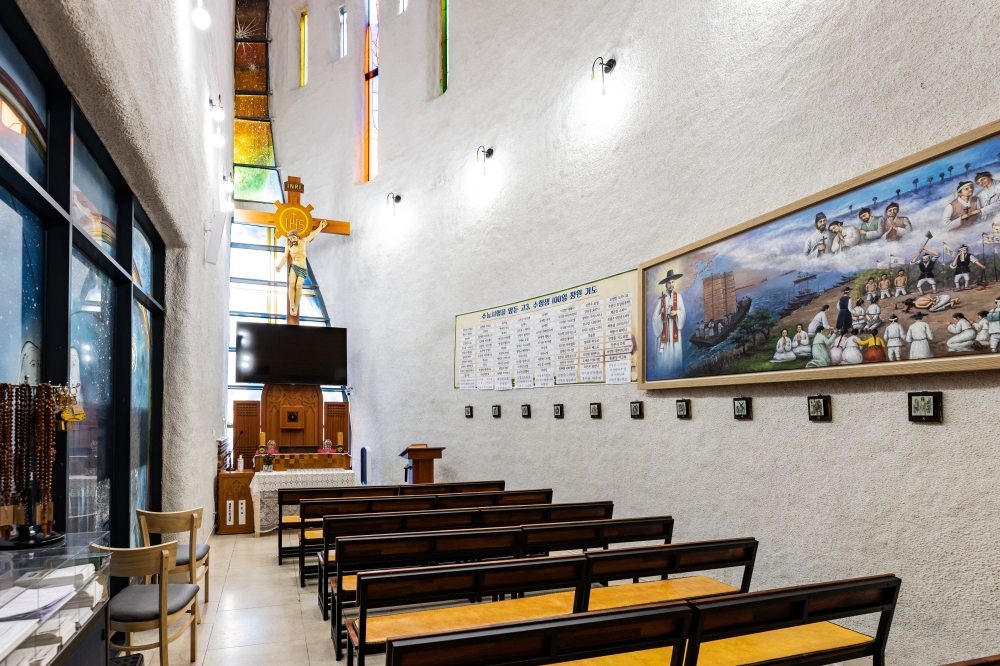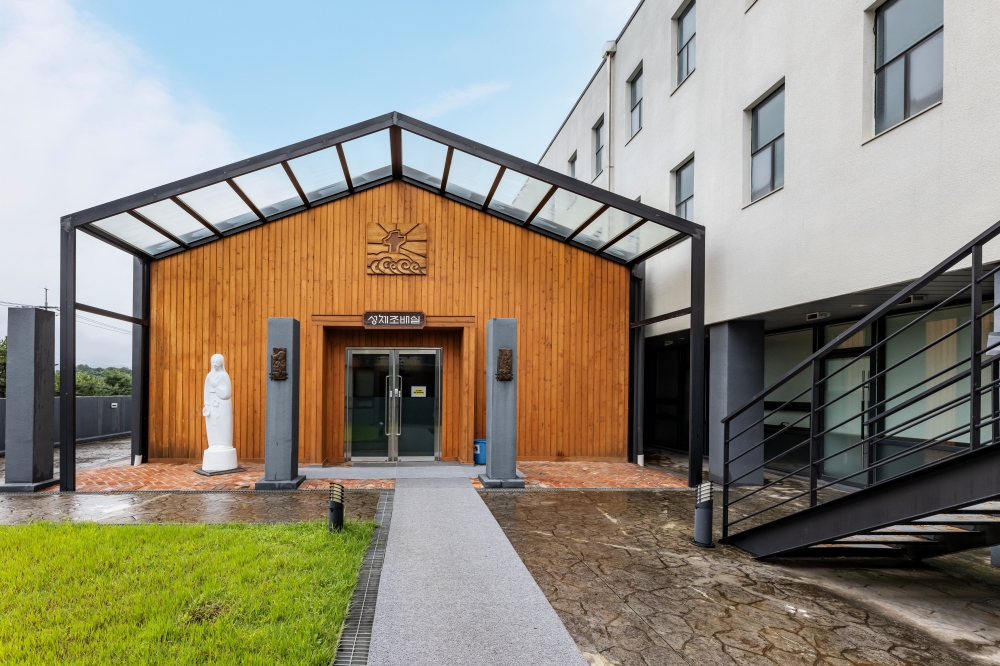Korean Catholicism is built on the blood of martyrs.
When Catholicism arrived on the Korean peninsula in the late Joseon period, it faced more than 100 years of severe persecution.
The ruling class of Joseon believed that Catholic doctrine threatened their social hierarchy and traditional customs.
It was a conflict between those determined to preserve the established order and those seeking a new way.
Many believers sacrificed their lives, but their resolve to live as Catholics or die remained unwavering.
In 1886, Korea and France signed the France-Korea Treaty, which granted religious freedom.
From a cathedral with its beautiful three bell towers to martyrdom sites of those who proved their faith with their lives, Incheon’s cathedrals and sacred places ask us what religion can truly accomplish.
A Shelter on the Hill for the Lowly: Dapdong Cathedral
Dapdong Cathedral is so beautiful that even those uninterested in religious architecture can’t help but take a photo.
It was the first Catholic church built in Incheon. In 1889, three years after Catholicism was officially permitted in Korea,
Father Wilhelm of the Paris Foreign Missions Society was appointed as the first parish priest of the Jemulpo Parish (now Dapdong Cathedral).
He had a temporary church built on a hill in Dapdong, marking the beginning of the cathedral’s history.
Father Wilhelm is also known for baptizing the independence activist Ahn Jung-geun and administering the sacrament of reconciliation before his death.
In 1937, the church was renovated in the Romanesque style, with red bricks and arches, resulting in its current appearance.
In recognition of its historical value, the elegant church was designated as Historic Site No. 287.
In recent years, the area around the church has been redeveloped to include a public parking lot and a park, making it a popular place for community relaxation.
The church lived out the Bible verse, “whatever you did for one of the least of these brothers and sisters of mine, you did for me.”
At a time when educational opportunities were scarce, the church founded the Haeseong Children’s Home, Bakmun School, and Bakmun Kindergarten to introduce children to the joy of learning.
The Sisters of St. Paul of Chartres at the cathedral also supports the poor through medical missions.
- Address 2 Uhyeon-ro 50beon-gil, Jung-gu, Incheon
- Inquiries+82-32-762-7613
- Opening HoursMonday-Friday 09:00-17:30
- Website dapdong.or.kr
The Two Hands of God Embracing the Martyrs: Jemuljindu Martyrs’ Shrine
“We have no questions to ask and no answers to give, since we have been caught because we believe in Catholicism,”
said Peter Son and his wife Kim, maintaining their faith even as they were executed at Jemuljindu in 1868.
The Jemuljindu Martyrs’ Shrine is the martyrdom site of ten Catholic believers who sacrificed their lives for their faith,
including the descendants of Korea’s first baptized Catholic, Peter Yi Seung-hoon, and members of the Catholic family of Peter Park Soon-jip.
Why was Jemuljindu a public execution site? “Jindu” means a wharf, and during the persecution of Catholics,
the Joseon government executed them at wharves—places of frequent traffic and cultural exchange—as a warning against foreign influence.
Built on the site of Incheon’s largest martyrdom, the shrine has a stark, stripped-down beauty.
The 15-meter-high church represents God’s two hands embracing the martyrs.
After passing through a narrow corridor lined with sacred images of the ten martyrs, visitors reach a small chapel.
Inside, a large sacred painting depicting the martyrdom scene offers a peaceful yet profound resonance.
- Address 240 Jemullyang-ro, Jung-gu, Incheon
- Inquiries+82-32-764-4193
- Opening HoursMonday-Saturday 11:00-16:00, closed on Sundays and public holidays
- Website cafe.naver.com/jemuljin
The Journey of Faith of the Three Martyrs: Gapgot Catholic Martyrs’ Shrine
In 1871, during King Gojong’s reign, five American warships and 1,200 marines arrived off the coast of Ganghwado Island, an event known as the Sinmiyangyo (the United States Expedition to Korea in 1871).
The U.S. sought retribution for the burning of the American merchant ship General Sherman at the Daedonggang River near Pyeongyang five years earlier and demanded trade with Joseon.
In response, Joseon intensified its persecution of Catholics.
Under King Gojong’s orders, Woo Yunjip, Choi Sunbok, and Park Sangson were among the first to be captured and beheaded at Gapgotjindu, their heads displayed on poles.
The Gapgot Catholic Martyrs’ Shrine was established in 2000 at Gapgotjindu, where the three martyrs died.
Today, it is a place of peace, in a time when people no longer have to sacrifice their lives to prove their faith.
Visitors can take a contemplative stroll past the tombstones of the three martyrs, the Tomb of Peter Park Soon-jip,
and the Path of the Cross and enjoy the view from the observation deck overlooking the Yeomhagang River.
A particularly noteworthy site is the Tomb of Peter Park Soon-jip.
Known as the “witness to the deeds of the martyrs,” he dedicated his life to collecting and burying the remains of martyrs and recording their life stories.
- Address 35 Haeandong-ro 1366beon-gil, Ganghwa-eup, Ganghwa-gun, Incheon
- Inquiries+82-32-933-1525
- Opening HoursMonday-Sunday 09:00-17:00
- Website www.gabgot.com








 325
325
















